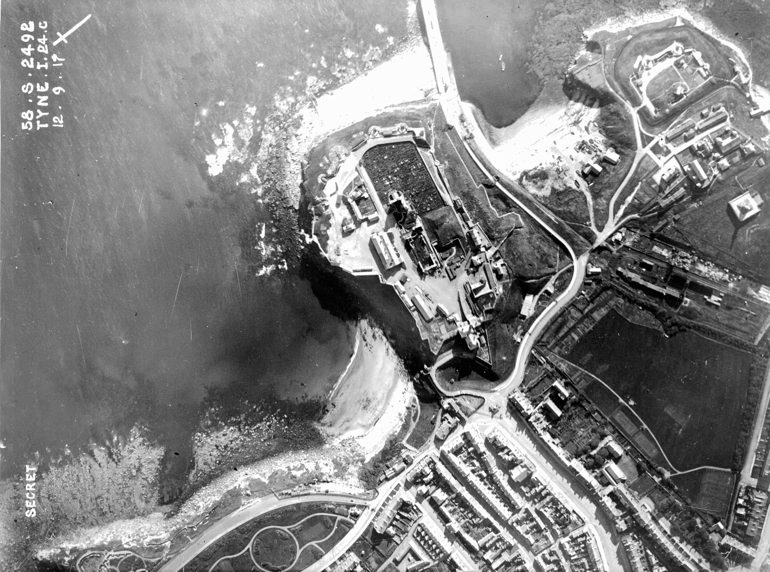|
Jemmy Joneson's Whurry
Jemmy Joneson's Whurry is a traditional Geordie folk song in Geordie dialect written circa 1815, by Thomas Thompson, in a style deriving from music hall. This song appears to be the last one Thomas Thompson wrote, and the earliest record of its publication is 1823, seven years after his death. Lyrics The song refers to the time before steam power on the water, a time when travel across and along the River Tyne was by wherry and similar which required muscle power. At the time Jimmy Joneson was well known, as was his boat, by passengers and by people generally on the Tyne. Shortly after the song was written, on Ascension Day, 19 May 1814, the first steamer started working on the Tyne, operated by the "Tyne Steam Packet Co." The publisher made an error on the first edition which led to this being copied onto many other publication, even after the error was brought to their attention and corrected The song appears in many publications including "Collection of songs chie ... [...More Info...] [...Related Items...] OR: [Wikipedia] [Google] [Baidu] |
Geordie Dialect Words
Geordie () is a nickname for a person from the Tyneside area of North East England, and the dialect used by its inhabitants, also known in linguistics as Tyneside English or Newcastle English. There are different definitions of what constitutes a Geordie. The term is used and has been historically used to refer to the people of the North East. A Geordie can also specifically be a native of Tyneside (especially Newcastle upon Tyne) and the surrounding areas. Not everyone from the North East of England identifies as a Geordie. Geordie is a continuation and development of the language spoken by Anglo-Saxon settlers, initially employed by the ancient Brythons to fight the Pictish invaders after the end of Roman rule in Britain in the 5th century. The Angles, Saxons and Jutes who arrived became ascendant politically and culturally over the native British through subsequent migration from tribal homelands along the North Sea coast of mainland Europe. The Anglo-Saxon kingdoms that eme ... [...More Info...] [...Related Items...] OR: [Wikipedia] [Google] [Baidu] |
Newcastle Upon Tyne
Newcastle upon Tyne ( RP: , ), or simply Newcastle, is a city and metropolitan borough in Tyne and Wear, England. The city is located on the River Tyne's northern bank and forms the largest part of the Tyneside built-up area. Newcastle is also the most populous city of North East England. Newcastle developed around a Roman settlement called Pons Aelius and the settlement later took the name of a castle built in 1080 by William the Conqueror's eldest son, Robert Curthose. Historically, the city’s economy was dependent on its port and in particular, its status as one of the world's largest ship building and repair centres. Today, the city's economy is diverse with major economic output in science, finance, retail, education, tourism, and nightlife. Newcastle is one of the UK Core Cities, as well as part of the Eurocities network. Famous landmarks in Newcastle include the Tyne Bridge; the Swing Bridge; Newcastle Castle; St Thomas’ Church; Grainger Town including G ... [...More Info...] [...Related Items...] OR: [Wikipedia] [Google] [Baidu] |
Songs Related To Newcastle Upon Tyne
A song is a musical composition intended to be performed by the human voice. This is often done at distinct and fixed pitches (melodies) using patterns of sound and silence. Songs contain various forms, such as those including the repetition and variation of sections. Written words created specifically for music, or for which music is specifically created, are called lyrics. If a pre-existing poem is set to composed music in classical music it is an art song. Songs that are sung on repeated pitches without distinct contours and patterns that rise and fall are called chants. Songs composed in a simple style that are learned informally "by ear" are often referred to as folk songs. Songs that are composed for professional singers who sell their recordings or live shows to the mass market are called popular songs. These songs, which have broad appeal, are often composed by professional songwriters, composers, and lyricists. Art songs are composed by trained classical composers fo ... [...More Info...] [...Related Items...] OR: [Wikipedia] [Google] [Baidu] |
English Folk Songs
The folk music of England is a tradition-based music which has existed since the later medieval period. It is often contrasted with courtly, classical and later commercial music. Folk music traditionally was preserved and passed on orally within communities, but print and subsequently audio recordings have since become the primary means of transmission. The term is used to refer both to English traditional music and music composed or delivered in a traditional style. There are distinct regional and local variations in content and style, particularly in areas more removed from the most prominent English cities, as in Northumbria, or the West Country. Cultural interchange and processes of migration mean that English folk music, although in many ways distinctive, has significant crossovers with the music of Scotland. When English communities migrated to the United States, Canada and Australia, they brought their folk traditions with them, and many of the songs were preserved by i ... [...More Info...] [...Related Items...] OR: [Wikipedia] [Google] [Baidu] |
Wherry
A wherry is a type of boat that was traditionally used for carrying cargo or passengers on rivers and canals in England, and is particularly associated with the River Thames and the River Cam. They were also used on the Broadland rivers of Norfolk and Suffolk. Regional usage in Great Britain London passenger wherries evolved into the Thames skiff, a gentleman's rowing boat. Wherries were clinker-built with long overhanging bows so that patrons could step ashore dryshod before landing stages were built along the river. It is the long angled bow that distinguishes the wherry and skiff from the gig and cutter which have steeper bows following the rise of the Royal Navy, and the building of landing stages. The use of wherries on the River Cam in Cambridge was common and is described by Daniel Defoe in his journey through England. The use of wherries on the River Cam preceded the popularity of punting by Cambridge University students. By the late 18th century, a name was give ... [...More Info...] [...Related Items...] OR: [Wikipedia] [Google] [Baidu] |
Tynemouth
Tynemouth () is a coastal town in the metropolitan borough of North Tyneside, North East England. It is located on the north side of the mouth of the River Tyne, hence its name. It is 8 mi (13 km) east-northeast of Newcastle upon Tyne. It is also home to Tynemouth Priory. Historically part of Northumberland until 1974, the town was a county borough which included the nearby town of North Shields. In 2001, the population of the town was recorded at 17,056. History The headland towering over the mouth of the River Tyne has been settled since the Iron Age. The Romans may have occupied it as a signal station, though it is just north of the Hadrian's Wall frontier (the Roman fort and supply depot of Arbeia stands almost opposite it on the southern headland of the Tyne). In the 7th century a monastery was built in Tynemouth and later fortified. The headland was known as ''Pen Bal Crag''. The monastery was sacked by the Danes in 800, rebuilt, and destroyed again in ... [...More Info...] [...Related Items...] OR: [Wikipedia] [Google] [Baidu] |
South Shields
South Shields () is a coastal town in South Tyneside, Tyne and Wear, England. It is on the south bank of the mouth of the River Tyne. Historically, it was known in Roman times as Arbeia, and as Caer Urfa by Early Middle Ages. According to the 2011 census, the town had a population of 75,337. It is the fourth largest settlement in Tyne and Wear; after Newcastle upon Tyne, Sunderland and Gateshead. The town became part of Tyne and Wear in 1974. It is within the historic county boundaries of County Durham. History The first evidence of a settlement within what is now the town of South Shields dates from pre-historic times. Stone Age arrow heads and an Iron Age round house have been discovered on the site of Arbeia Roman Fort. The Roman garrison built a fort here around AD 160 and expanded it around AD 208 to help supply their soldiers along Hadrian's Wall as they campaigned north beyond the Antonine Wall. Divisions living at the fort included Tigris bargemen (from Persia a ... [...More Info...] [...Related Items...] OR: [Wikipedia] [Google] [Baidu] |
North Shields
North Shields () is a town in the Borough of North Tyneside in Tyne and Wear, England. It is north-east of Newcastle upon Tyne and borders nearby Wallsend and Tynemouth. Since 1974, it has been in the North Tyneside borough of Tyne and Wear: it's historic administration was as part of the Castle ward in county of Northumberland. It was part of the Tynemouth County Borough, when abolished in 1974 the borough became an unparished area. It is on the northern bank of the River Tyne, opposite to South Shields on the other bank. The name derives from Middle English ''schele'' meaning "temporary sheds or huts used by fishermen". History Earliest records North Shields is first recorded in 1225, when the Prior of Tynemouth, Germanus, decided to create a fishing port to provide fish for the Priory which was situated on the headland at the mouth of the River Tyne. He also supplied ships anchored near the priory. A number of rudimentary houses or 'shiels' were erected at the mo ... [...More Info...] [...Related Items...] OR: [Wikipedia] [Google] [Baidu] |
Davy Jones' Locker
Davy Jones's locker is a metaphor for the oceanic abyss, the final resting place of drowned sailors and travellers. It is a euphemism for drowning or shipwrecks in which the sailors' and ships' remains are consigned to the depths of the ocean (to be ''sent to Davy Jones' Locker''). The origins of the name of Davy Jones, the sailors' devil, are unclear, with a 19th-century dictionary tracing Davy Jones to a "ghost of Jonah". Other explanations of this nautical superstition have been put forth, including an incompetent sailor or a pub owner who kidnapped sailors. History The earliest known reference of the negative connotation of Davy Jones occurs in the ''Four Years Voyages of Capt. George Roberts'', by author Daniel Defoe, published in 1726 in London. An early description of Davy Jones occurs in Tobias Smollett's ''The Adventures of Peregrine Pickle'', published in 1751: In the story, Jones is described as having saucer eyes, three rows of teeth, horns, a tail, and blue ... [...More Info...] [...Related Items...] OR: [Wikipedia] [Google] [Baidu] |
Folk Song
Folk music is a music genre that includes #Traditional folk music, traditional folk music and the Contemporary folk music, contemporary genre that evolved from the former during the 20th-century folk revival. Some types of folk music may be called world music. Traditional folk music has been defined in several ways: as music transmitted orally, music with unknown composers, music that is played on traditional instruments, music about cultural or national identity, music that changes between generations (folk process), music associated with a people's folklore, or music performed by Convention (norm), custom over a long period of time. It has been contrasted with popular music, commercial and art music, classical styles. The term originated in the 19th century, but folk music extends beyond that. Starting in the mid-20th century, a new form of popular folk music evolved from traditional folk music. This process and period is called the (second) folk revival and reached a zenith ... [...More Info...] [...Related Items...] OR: [Wikipedia] [Google] [Baidu] |
William Purvis (Blind Willie)
William Purvis, probably better known as "Blind Willie" (1752 – 20 July 1832), was a Tyneside concert hall song writer and performer in England at the end of the 18th and start of the 19th century. His most famous song is "Broom Buzzems". He became known later as the "ancient laureate of the Tyne" and was remembered in the songs of Robert Gilchrist (1797–1844) and Thomas Thompson (1773–1816). Early life William Purvis was the son of John Purvis, a waterman, and Margaret Purvis (who died in All Saints Poorhouse aged over 100). William was born early in the year of 1752 in Newcastle, and baptised at All Saints' Church on 16 February 1752. He was either blind from birth, or very shortly after, although he often made comments from which the onlooker would think he could see. Very rarely did he perform in the street, preferring to perform in ale houses, in which he would depend on the charity of the public, but as he seemed to bring trade and the public appeared to like ... [...More Info...] [...Related Items...] OR: [Wikipedia] [Google] [Baidu] |
William Mitford, Singer-songwriter
William Mitford (1788–1851) was a Tyneside songwriter of the 19th century. His best known works are those about "Cappy, The Pitman's Dog" and "The Pitman's Courtship". Early life William Mitford was born at Preston (which was a village close to North Shields) on 10 April 1788. His parents died when he was very young, and at the age of 3 or 4 his uncle brought him to Newcastle upon Tyne. He became a shoemaker's apprentice, possibly to the father of Willie Armstrong, and worked in Dean Street. The earliest record of William Mitford appears in the budget chapbook "Newcastle Songster" series in 1816. Mitford went on to write some of the region's most well-known songs. It is known that Mitford played the part of the bishop in the "Coronation" by The Cordwainers Company of Newcastle upon Tyne at The Freeman Hospital in Westgate, on the Festival of St. Crispin (the patron saints of cobblers, tanners, and leather workers) on 29 June 1823. Later life Shortly after, he left the s ... [...More Info...] [...Related Items...] OR: [Wikipedia] [Google] [Baidu] |


.png)


.jpg)

